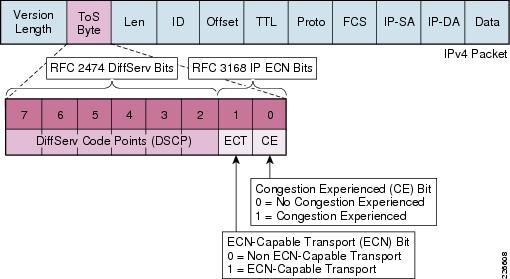To get QOS to work the way we want it to we have to do a few things to identify the packets going across the network, then we can push them into the slow lanes and the fast lanes or even kick them off the lie. So how do we do this? We have a few tool things that can help us along the way.
Classifying and marking
Scheduling
Traffic Shaping, and link specific mechanisms
Classifying and marking
This allows us to find out who is who and how we will treat them. We can do this at the layer 2 or layer 3, 4 or even 7(cisco specific tools for this one)
At at layer 2 we can mark the Cos)class of service bit with a marking to let us know what type of traffic it is
Layer 3 we can use IP Precedence(old way) or Dirrerentiated Services Code Points(newer way)
Layer 4 we can use the TCP/UPD source and destination ports
Layer 7 we can use NBAR(Network based application Recognition)
When we are at the layer 2(CoS) level we can set the user priority bit from on the 802.1Q header. We have a max of 3 bits so that leaves us with 0-7. We usually use 5 for voice in case you are wondering.
At layer 3 the (ToS) Level we have 2 features the IPP bit I spoke about before which are the same as the CoS, but we add the next 3 bits and we come up with DSCP which is the way we prefer.
As you can see in the drawing above DSCP takes up all of the 1st 6 bits, and the IPP is the 1st 3 bits. From there we can break down PHB(per hop behaviors) for DSCP, but we'll save that for another blog.
Layer 4 is a little different so I will come back to that later, and finally we have NBAR at layer 7
NBAR is Cisco proprietary that matches traffic against Protocol Description Language Module which tells us what what type of traffic is coming across. You need to have CEF running and of course this needs to be on cisco. As of this writing Juniper didn't offer this feature, but people got around it using access-list in some method to get something simular.
Thats it for now, I will brea these down further and further as we go on. QOS is a pretty hard topic and there is no way I can cover this in few blog post. It would prob take close to 30, but this should get everyones appetite we to go out and find other resources to use to fill in the gaps.
Thanks

No comments:
Post a Comment